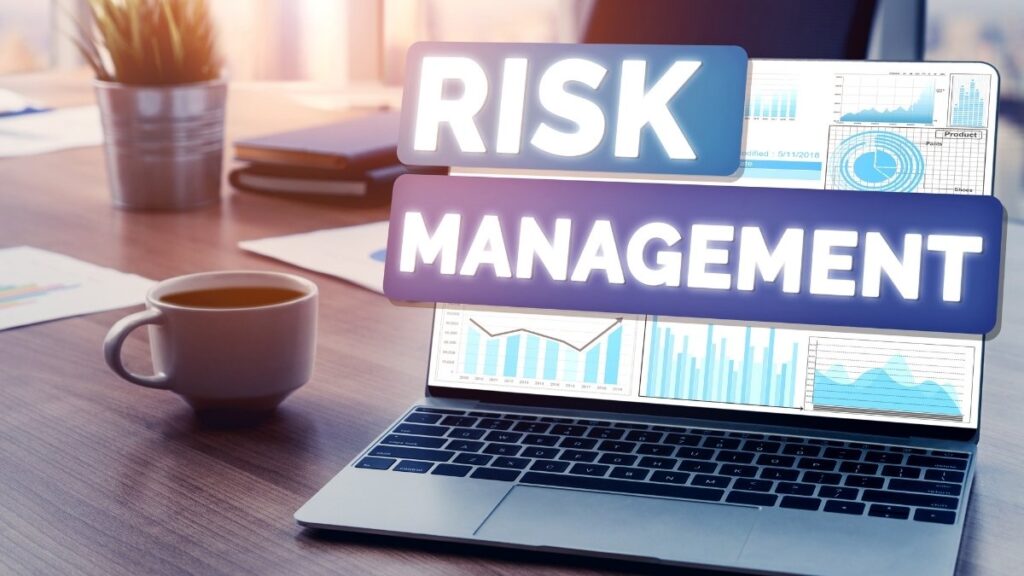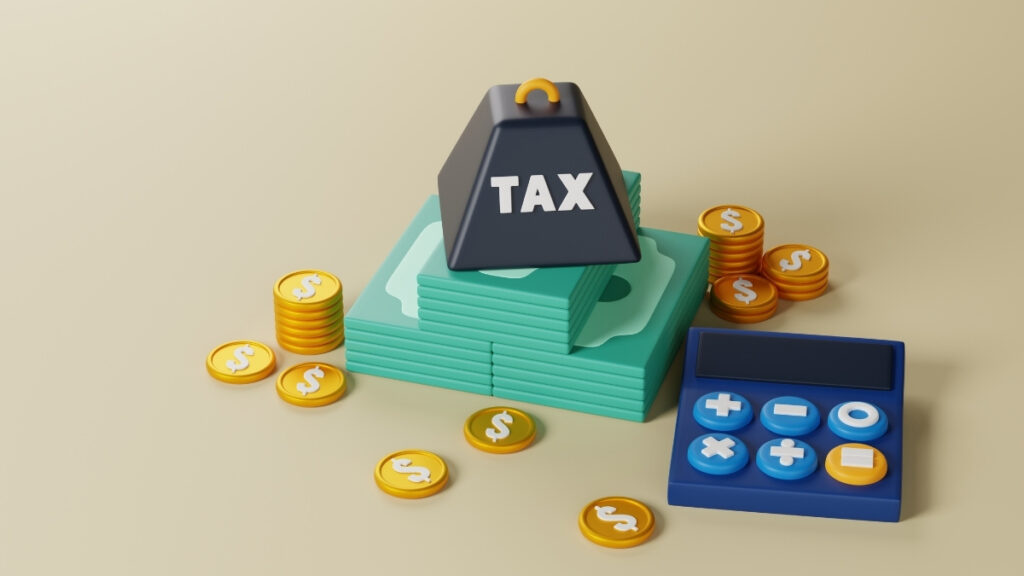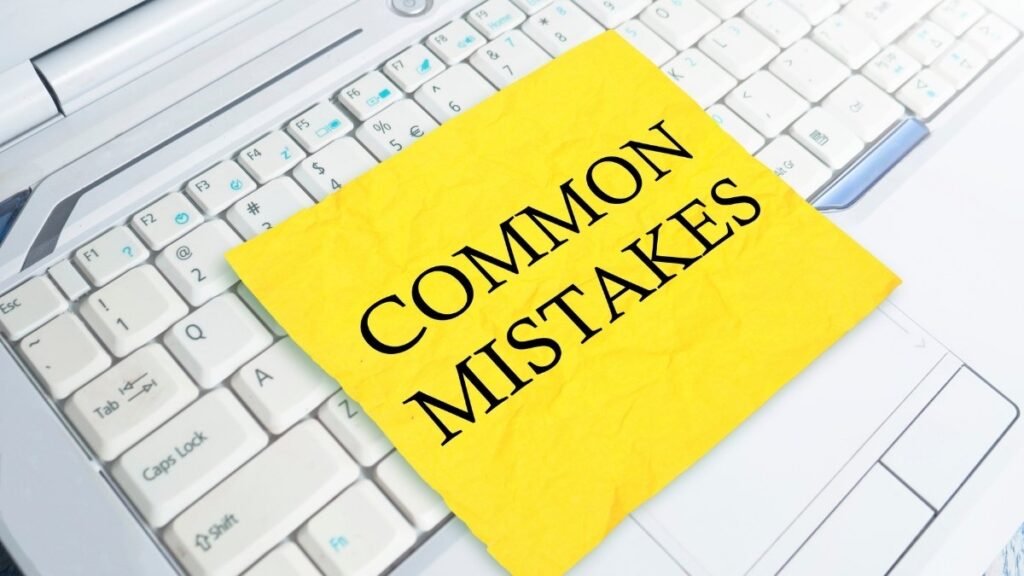
If you’re reading this, you probably think the stock market is either a casino for rich people or a mathematical nightmare designed to steal your money.
You’re terrified of losing your hard-earned cash, overwhelmed by complex financial jargon, and convinced you need thousands of dollars just to get started. Here’s the truth: beginner stock market investing has never been simpler or more accessible.
By the end of this guide, you’ll understand exactly how to start investing in stocks with as little as $1, which apps make the process foolproof, and how to build long-term wealth without becoming a financial expert or mathematical genius.
The Complete Beginner’s Guide to Stock Investing in 2025
You check your savings account balance and feel frustrated. Your money sits there earning almost nothing while you watch prices go up everywhere. You know you should invest, but the stock market feels scary and confusing.
This guide fixes that problem. You’ll learn exactly how to start investing, step by step, without the confusing jargon that makes your head spin.
Why Your Stock Market Fear Is Costing You Money
Your fear of investing is expensive. Really expensive.

The S&P 500 has averaged 10% returns every year for the past 100 years. Over the last 5 years, it averaged 13.6% annually. Meanwhile, your savings account pays you maybe 1% if you’re lucky.
Here’s what this means in real money:
- $10,000 invested in the S&P 500 ten years ago would be worth over $26,000 today
- That same $10,000 in savings would be worth about $10,500
- You lost $15,500 by playing it “safe”
Why cash actually loses money: Inflation makes everything more expensive over time. If inflation runs at 3% per year and your savings earn 1%, you’re actually losing 2% of buying power annually. This means your $1,000 today will only buy $980 worth of stuff next year.
The compound interest effect: When you invest, you earn money on your money. Then you earn money on that money too. This creates a snowball effect that builds serious wealth over time.
Example: Put $100 monthly into the S&P 500 for 30 years at 10% average returns. You’ll have about $190,000. You only put in $36,000 of your own money. Compound interest gave you the other $154,000.
Key takeaway: The biggest risk isn’t losing money in stocks. It’s losing buying power by keeping everything in cash.
What Actually Is a Stock? (Breaking Down the Jargon)
A stock is just a tiny slice of ownership in a company. Think of it like buying a single slice of pizza when the whole pizza represents the entire company.

How stocks work: When you buy Apple stock, you own a microscopic piece of Apple. If Apple makes more money, your slice becomes more valuable. If Apple struggles, your slice loses value.
Market capitalization explained: This is just the total value of all company slices added together. You calculate it by multiplying the number of shares by the current stock price.
Example: Microsoft has 7.56 billion shares trading at $225 each. 7.56 billion × $225 = $1.7 trillion market cap. That’s Microsoft’s total value according to the stock market.
Company size categories:
- Large-cap: Companies worth more than $10 billion (like Apple, Microsoft, Amazon)
- Mid-cap: Companies worth $2-10 billion (like DocuSign, Zoom)
- Small-cap: Companies worth less than $2 billion (thousands of smaller companies)
Types of stocks:
- Growth stocks: Companies expected to grow fast (like Tesla, Nvidia)
- Value stocks: Established companies trading cheaply (like Berkshire Hathaway)
- Income stocks: Companies that pay regular dividends (like Coca-Cola, Johnson & Johnson)
Why this matters for beginners: You don’t need to pick individual companies. You can buy funds that own hundreds or thousands of stocks at once. This spreads your risk automatically.
The 2025 Reality: It’s Never Been Easier to Start
Investing used to require thousands of dollars and expensive brokers. Not anymore.

What changed:
- Zero commission trades are standard now
- Most brokers require no minimum deposit
- You can buy fractional shares starting at just $1
- Apps make investing as easy as ordering food
Best platforms for beginners in 2025:
Fidelity – Best Overall
- No account minimums or trading fees
- 24/7 customer support
- Excellent research tools
- Wide selection of commission-free ETFs
Charles Schwab – Most Well-Rounded
- Won multiple 2025 industry awards
- No minimums or commissions
- Strong mobile app
- Great for both beginners and advanced investors
Robinhood – Simplest Interface
- Super easy to use
- Commission-free everything
- Fractional shares from $1
- Good for casual investors
SoFi – Great Perks
- $0 commissions on stocks and ETFs
- Fractional shares from $5
- No account fees
- Additional financial services
Practice before you invest real money: Most platforms offer “paper trading” where you can practice with fake money. This lets you learn how everything works without risking real cash.
What you need to get started:
- A smartphone or computer
- Bank account for transfers
- Social Security number
- About 10 minutes to open an account
Your First Investment Strategy (The Set-It-and-Forget-It Approach)
Warren Buffett, one of history’s best investors, gives the same advice to beginners: Buy a low-cost S&P 500 index fund and hold it forever.

Why this works: The S&P 500 includes the 500 largest U.S. companies. When you buy an S&P 500 fund, you automatically own tiny pieces of Apple, Microsoft, Amazon, Google, and 496 other major companies.
Why index funds beat most experts: Studies show that 90% of professional fund managers fail to beat the S&P 500 over 15+ years. They charge high fees and still lose to a simple index fund.
Recommended fund: iShares Core S&P 500 ETF (IVV)
- Tracks the S&P 500 exactly
- 0.03% annual fee (that’s $3 per year on every $10,000 invested)
- Available at all major brokers
- Automatic diversification across 500 companies
How much to put in stocks: Use the “Rule of 110.” Subtract your age from 110. That’s your stock percentage.
- Age 25: 110 – 25 = 85% stocks, 15% bonds
- Age 35: 110 – 35 = 75% stocks, 25% bonds
- Age 45: 110 – 45 = 65% stocks, 35% bonds
Dollar-cost averaging strategy: Invest the same dollar amount every month, regardless of whether stocks are up or down. This smooths out price swings over time.
Example: Invest $200 monthly for 20 years in the S&P 500. Assuming 10% average returns, you’ll have about $153,000. You only invested $48,000 of your own money.
Why this strategy works:
- Removes emotion from investing
- Takes advantage of compound growth
- Requires minimal time and knowledge
- Works in both good and bad markets
How to Actually Buy Your First Stock (Step-by-Step)
Here’s exactly how to make your first investment, using Fidelity as an example.

Step 1: Open your account (5 minutes)
- Download the Fidelity app or visit their website
- Click “Open an Account”
- Choose “Individual Taxable Account” for now
- Enter your personal information
- Link your bank account
Step 2: Fund your account
- Transfer money from your bank (takes 1-3 business days)
- Start with whatever amount feels comfortable
- $100 is fine for your first investment
Step 3: Choose your investment
- Search for “VOO” (Vanguard S&P 500 ETF) or “IVV” (iShares Core S&P 500 ETF)
- Both track the same index with tiny fees
Step 4: Place your order Two order types matter for beginners:
Market Order:
- Buys immediately at current price
- Best for index funds where price doesn’t change much
- Use this for your first purchase
Limit Order:
- Only buys if price hits your specified target
- Good for individual stocks
- Not needed for broad index funds
Step 5: Complete your purchase
- Enter how much money you want to invest (like $100)
- The app will calculate how many shares that buys
- Review and confirm your order
- You now own a piece of 500 companies
Step 6: Set up automatic investing
- Go to “Automatic Investing” in your app
- Choose the same fund (VOO or IVV)
- Set monthly amount ($50, $100, $200, whatever works)
- Pick a date each month
- Turn on automatic reinvestment of dividends
What happens next: Your money gets invested automatically every month. Dividends get reinvested to buy more shares. You just added a wealth-building system that runs itself.
Understanding Risk (Without the Panic)
Risk in stocks isn’t what most people think. The real risk is being too conservative.

Historical perspective: The stock market has never lost money over any 20-year period in history. Even if you bought at the worst possible time before major crashes, you still made money if you held for 20 years.
Worst-case scenarios and recovery times:
- 2008 Financial Crisis: Market dropped 50%, recovered in 4 years
- 2000 Dot-com Crash: Market dropped 49%, recovered in 7 years
- 1929 Great Depression: Market dropped 83%, recovered in 15 years
Why index funds reduce risk: When you own one company’s stock, that company could fail and you lose everything. When you own 500 companies through an index fund, a few failing companies barely affects your total.
Risk management rules:
- Never invest money you need within 5 years
- Keep 3-6 months of expenses in savings before investing
- Start small and increase gradually as you get comfortable
- Focus on time in market, not timing the market
The biggest risks to avoid:
- Keeping all money in savings (guaranteed loss to inflation)
- Trying to time market highs and lows
- Investing money you need for rent or emergencies
- Panic selling during market drops
How to think about volatility: Market drops are like sales at your favorite store. When stocks go down, you’re buying more shares for the same monthly investment. This actually helps long-term returns.
Reading the Market: Basic Ratios That Actually Matter
You’ll hear people talk about P/E ratios, debt-to-equity, and other metrics. Here’s what beginners actually need to know.

P/E Ratio (Price-to-Earnings) simplified: This tells you how much you’re paying for every dollar of company profit.
Example: Microsoft has a P/E ratio of 36. This means you pay $36 for every $1 the company earns annually. A lower P/E generally means the stock is cheaper relative to earnings.
Why P/E ratios can be tricky:
- High P/E might mean investors expect fast growth
- Low P/E might mean the company has problems
- Different industries have different normal P/E ranges
- Past earnings don’t predict future earnings
The honest truth for beginners: Individual stock analysis takes years to learn well. Most professionals get it wrong more often than they get it right. You’re better off buying broad market funds that own everything.
When to consider individual stocks:
- After you’ve invested in index funds for at least 2 years
- When you understand financial statements
- With money you can afford to lose completely
- For fun and learning, not your core strategy
Keep it simple approach:
- Put 80-90% in broad market index funds
- Use 10-20% for individual stocks if you want to learn
- Never bet your financial future on stock picking
Ratios to understand for education:
- P/E Ratio: Price compared to earnings
- PEG Ratio: P/E ratio adjusted for growth rate
- Debt-to-Equity: How much debt compared to ownership value
- Return on Equity: How efficiently the company uses investor money
Bottom line: Learn these for knowledge, but don’t base investment decisions on them until you have significant experience.
Tax Implications Made Simple
The government wants a piece of your investment gains. Here’s how to minimize what you owe.

Two types of capital gains:
Short-term (held less than 1 year):
- Taxed as regular income
- Could be 10% to 37% depending on your tax bracket
- Expensive way to invest
Long-term (held more than 1 year):
- Taxed at lower capital gains rates
- 0%, 15%, or 20% for most people
- Much better deal
Tax-advantaged accounts:
Roth IRA (Best for most beginners):
- Contribute after-tax money
- Investments grow tax-free forever
- No taxes when you withdraw in retirement
- 2025 limit: $7,000 per year if under 50
Traditional IRA:
- Get tax deduction now
- Pay taxes when you withdraw
- Good if you expect lower tax bracket in retirement
401(k) through work:
- Often includes employer matching (free money)
- Higher contribution limits
- Traditional or Roth options usually available
Tax-loss harvesting: Advanced strategy where you sell losing investments to offset gains. Don’t worry about this until you have substantial investments.
Simple tax strategy:
- Max out Roth IRA first ($7,000 annual limit)
- Get full employer 401(k) match
- Hold investments over 1 year when possible
- Use taxable accounts for amounts above retirement account limits
Record keeping: Your broker tracks everything automatically. You’ll get tax forms each year showing your gains and losses.
2025 Market Outlook and What It Means for Beginners
Financial experts are making predictions about 2025. Here’s what they’re saying and why it doesn’t matter much for your strategy.

What Wall Street expects:
- Goldman Sachs forecasts 10% S&P 500 returns for 2025
- Median analyst target suggests modest growth
- Some predict sideways movement with high volatility
Why predictions are usually wrong:
- Experts have terrible track records forecasting short-term moves
- Unexpected events (wars, pandemics, elections) change everything
- Markets often do the opposite of what everyone expects
What actually matters for beginners:
- Starting early beats trying to time the market
- Consistent investing smooths out short-term volatility
- Long-term trends matter more than yearly predictions
Current market opportunities:
- Many quality companies trade at reasonable prices
- Volatility creates better buying opportunities
- Interest rates may stabilize, supporting stock valuations
Your 2025 action plan:
- Ignore daily market predictions
- Stick to your monthly investment schedule
- Take advantage of any market drops to buy more shares
- Focus on building habits, not chasing performance
Historical perspective: Every year, experts predict market directions. They’re right about as often as a coin flip. Meanwhile, patient investors who bought index funds and held them have built serious wealth regardless of short-term predictions.
Common Beginner Mistakes (And How to Avoid Them)
New investors make predictable errors. Learn from others’ mistakes instead of making them yourself.

Mistake #1: Trying to time the market Waiting for the “perfect” time to invest. There’s always some reason to wait – elections, economic uncertainty, high prices, low prices.
Solution: Start with whatever the market gives you today. Time in the market beats timing the market.
Mistake #2: Investing emotionally Buying when everyone’s excited (prices high) and selling when everyone’s panicked (prices low). This guarantees you buy high and sell low.
Solution: Automatic investing removes emotion. Set up monthly transfers and don’t watch daily price movements.
Mistake #3: Not diversifying enough Putting all money in one stock or sector. If that company or industry struggles, you lose big.
Solution: Broad market index funds automatically diversify across hundreds of companies and sectors.
Mistake #4: Checking portfolio daily Watching daily swings creates stress and leads to bad decisions. The market goes up and down constantly.
Solution: Check your investments monthly at most. Focus on your total progress over months and years, not daily changes.
Mistake #5: Following “hot tips” Acting on stock recommendations from social media, friends, or TV shows without understanding the investment.
Solution: If someone had a guaranteed way to get rich from stocks, they wouldn’t share it on TikTok. Stick to proven strategies.
Mistake #6: Investing money you need soon Using rent money, emergency funds, or money for major purchases to buy stocks.
Solution: Only invest money you won’t need for at least 5 years. Keep 3-6 months of expenses in savings first.
Mistake #7: Paying high fees Choosing actively managed funds with 1-2% annual fees instead of low-cost index funds with 0.03% fees.
Solution: Every 1% in fees costs you about $10,000 for every $100,000 invested over 20 years. Choose low-fee index funds.
Mistake #8: Analysis paralysis Spending months researching the “perfect” investment instead of starting with a simple, solid choice.
Solution: A low-cost S&P 500 index fund is good enough to start. You can always adjust later as you learn more.
Your 30-Day Action Plan
Stop planning and start doing. Here’s exactly what to do each week to become an investor.

Week 1: Set up your foundation
- Choose your platform (Fidelity, Charles Schwab, or Robinhood)
- Download the app and open your account
- Link your bank account
- Transfer your initial investment amount ($100 is fine)
Daily action: Spend 15 minutes reading about investing or watching beginner videos.
Week 2: Make your first investment
- Buy your first index fund (VOO, IVV, or VTI)
- Set up automatic monthly investing
- Enable dividend reinvestment
- Set up automatic transfers from your bank
Daily action: Note how it feels to be an investor. You now own pieces of hundreds of companies.
Week 3: Expand your knowledge
- Read “The Bogleheads’ Guide to Investing” or “A Random Walk Down Wall Street”
- Listen to investing podcasts during commutes
- Learn about different types of investment accounts
- Calculate your ideal asset allocation using the Rule of 110
Daily action: One small step to increase your financial knowledge.
Week 4: Optimize and plan ahead
- Review your first month’s performance (but don’t obsess over it)
- Increase your monthly investment if possible
- Open a Roth IRA if you haven’t already
- Plan your investment increases for the next year
Daily action: Stick to your plan. Resist the urge to make changes based on short-term market movements.
Specific first steps:
- Download Fidelity app today
- Open account with $100 minimum
- Search for “VOO” and buy $100 worth
- Set up $100 monthly automatic investment
- Ignore daily price changes
By day 30, you’ll have:
- An investment account with real money invested
- Automatic monthly investing set up
- Basic knowledge of how markets work
- A long-term wealth-building system running on autopilot
Conclusion
Investing in stocks isn’t complicated. You don’t need to be smart, rich, or lucky. You just need to start.
The hardest part is taking the first step. Once you do, momentum builds. You’ll see your money grow. You’ll learn more. You’ll get comfortable with market ups and downs.
Your biggest enemy isn’t market crashes or bad stock picks. It’s waiting for the “perfect” time that never comes. Every month you delay costs you money through inflation and missed compound growth.
The tools exist today to build wealth with almost no fees, no minimums, and no complexity. Apps make investing as easy as ordering food. Index funds provide instant diversification. Automatic investing removes emotion and builds discipline.
Your future self is counting on the decisions you make today. Start with whatever amount feels comfortable – even $25 matters. Set up automatic monthly investing. Buy a simple S&P 500 index fund. Then let time and compound interest do the heavy lifting.
Stop waiting for the “perfect time” to start investing. Your future self will thank you for starting today, even with just $25. The best time to plant a tree was 20 years ago. The second best time is now.
Take action: Download an investing app today. Open an account. Buy your first index fund. Start building wealth that will compound for decades.
The market will always have uncertainty. There will always be reasons to wait. But the cost of waiting is higher than the cost of starting imperfectly. Start investing in stocks today – your financial future depends on it.






